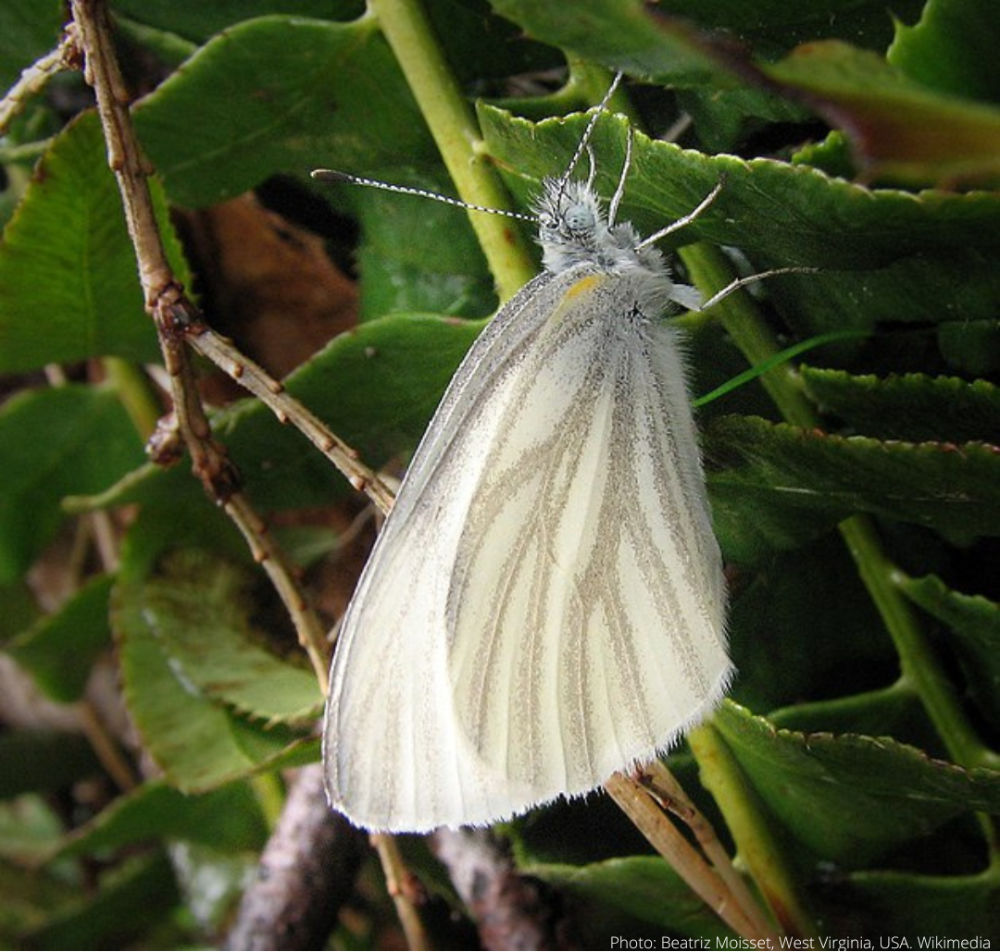
We collect basic website visitor information on this website and store it in cookies. We also utilize Google Analytics to track page view information to assist us in improving our website.
Written by: Rachel Pigden
In Ontario and beyond, the beloved monarch butterfly is known as a flagship species for pollinator conservation. Perhaps one of the biggest successes of the monarch conservation movement is its emphasis on the importance of native plants in protecting pollinators (and other wildlife). Milkweed (Asclepias sp.), once villainized as a noxious weed, is now recognized for its critical role as the sole food source for monarch larvae. But monarchs and milkweed are only part of the story—Ontario is home to several other butterflies-at-risk that rely on specific native plants to survive. Follow along as we profile some of these special butterfly-plant pairings.

Walk through a temperate forest in the early spring and you will be greeted by nature’s early risers: the spring ephemerals. These perennial plants are specialists that emerge and grow quickly early in the year, then die back and remain underground as warm weather approaches. While the spring ephemerals are known as harbingers of hope for those anxious for gardening season to begin, they also fill an important ecological niche by providing early food and habitat for wildlife.
One group of spring ephemerals, the Toothworts, is particularly important for  the West Virginia White, a small-to-medium white butterfly classified as species of special concern in Ontario. Toothworts are small perennials in the mustard (Brassicaceae) family; the favorite species of West Virginia Whites in Ontario is Two-leaved Toothwort (Cardamine diphylla). The West Virginia White is adapted to the fleeting nature of Toothwort: these butterflies hatch only one brood per year, from solitary eggs laid on the plants in early spring. Larvae feed for 10-20 days after hatching, then pupate and hibernate until the following spring, when adults once again emerge alongside their host plant and the cycle repeats.
the West Virginia White, a small-to-medium white butterfly classified as species of special concern in Ontario. Toothworts are small perennials in the mustard (Brassicaceae) family; the favorite species of West Virginia Whites in Ontario is Two-leaved Toothwort (Cardamine diphylla). The West Virginia White is adapted to the fleeting nature of Toothwort: these butterflies hatch only one brood per year, from solitary eggs laid on the plants in early spring. Larvae feed for 10-20 days after hatching, then pupate and hibernate until the following spring, when adults once again emerge alongside their host plant and the cycle repeats.
West Virginia Whites are found throughout the Great Lakes states and southern Ontario (some reports suggest they may be found in Quebec as well). Across their range, they face the same habitat loss and fragmentation, pressure common to many species adapted to interior forest habitats. These butterflies are strict forest specialists: they require continuous tree cover and are unable to adapt to common forest interruptions such as hydro corridors. Another significant threat to the species is invasive Garlic Mustard (Alliaria petiolata)—and the problem is two-fold. Garlic Mustard not only outcompetes Toothwort in forest floors but is also toxic to West Virginia White larvae that hatch on the plants because adults are attracted to them.
fragmentation, pressure common to many species adapted to interior forest habitats. These butterflies are strict forest specialists: they require continuous tree cover and are unable to adapt to common forest interruptions such as hydro corridors. Another significant threat to the species is invasive Garlic Mustard (Alliaria petiolata)—and the problem is two-fold. Garlic Mustard not only outcompetes Toothwort in forest floors but is also toxic to West Virginia White larvae that hatch on the plants because adults are attracted to them.
Join our email list to receive occasional updates about Network of Nature and ensure you get the news that matters most, right in your inbox.